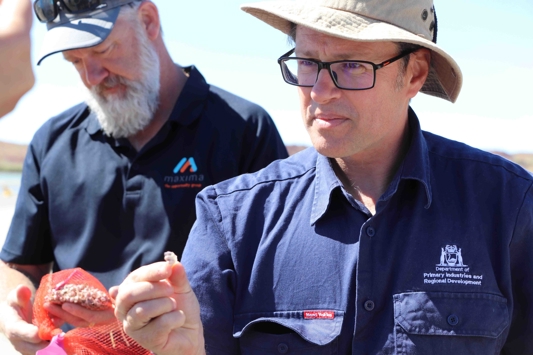Steinhausia
Steinhausia species are microsporidian parasites that have been reported worldwide, including in Australia, from a wide range of shellfish species including mussels, flat oysters, cockles and oysters.
In Western Australia (WA), Steinhausia species have been found in wild and cultured shellfish species in the Kimberley, Pilbara, Gascoyne, Perth metropolitan and Great Southern regions.
It is unknown whether Steinhausia can cause significant disease or under what circumstances it may cause disease. This is due to limited understanding of Steinhausia species lifecycle and the extent of the shellfish species they may infect.
Infection with Steinhausia is not usually reported as the primary cause of mortality in shellfish.
Features of Steinhausia and its spread
Steinhausia species are reported to infect the ova (eggs) of female shellfish.
Infection with Steinhausia is generally reported to have minimal effect on the shellfish host. In some cases though, infection is associated with inflammation of the ovary and heavy infections may affect the fecundity (reproduction) of infected shellfish.
The most likely way Steinhausia spreads is when parasite spores are released with eggs during spawning and are ingested by a suitable host. The complete lifecycle of Steinhausia species is unknown and it is unclear whether an intermediate host is required for transmission to the final shellfish host. The environmental and host conditions that can lead to signs of disease are also still to be understood.
Identifying Steinhausia
Infection with Steinhausia may be associated with an abnormal appearance of the ovary, including depressed creamy patches, spots or visibly raised areas.
Steinhausia infection in shellfish is currently identified by observing stained sections of shellfish ovary tissue under a light microscope or electron microscope to look for the parasite..
There is currently no validated molecular diagnostic method (such as a PCR test) available to detect the parasite.
The Department of Primary Industries and Regional Development is working with industry to consider future research needs in relation to Steinhausia species in WA.
How to report a potential aquatic animal disease
If you see evidence of unusual signs of disease or deaths in fish, shellfish, crustaceans or other aquatic animals, please report it via the FishWatch 24-hour hotline on 1800 815 507.
Make a note of where and what you saw (with the species affected, GPS coordinates, photographs if possible) so you can provide the information when you call us.
WA aquaculture licence holders should report via the WA aquaculture hotline, as per their aquaculture licence conditions.
Contact us
-
DPIRD Animal Biosecurity

